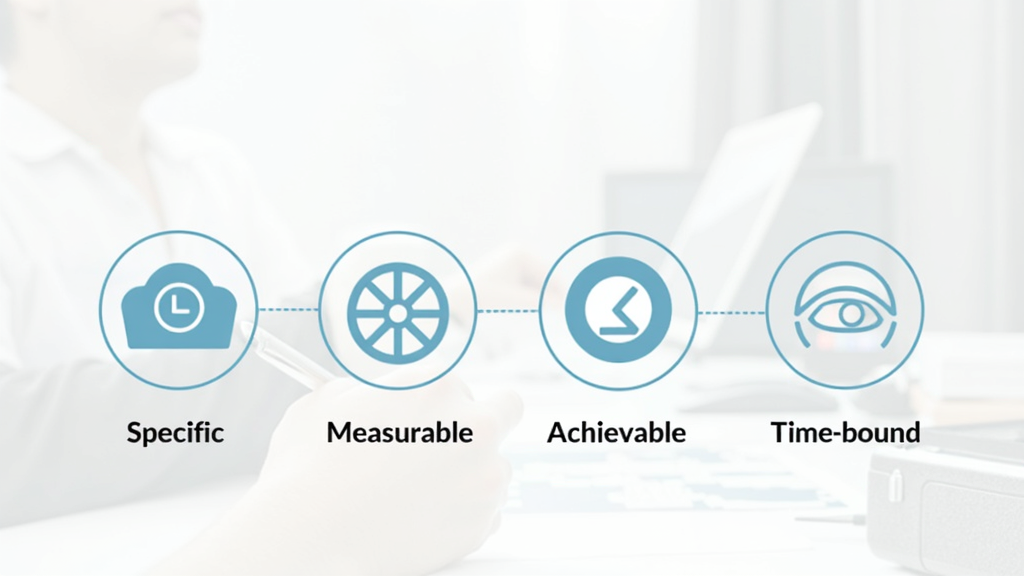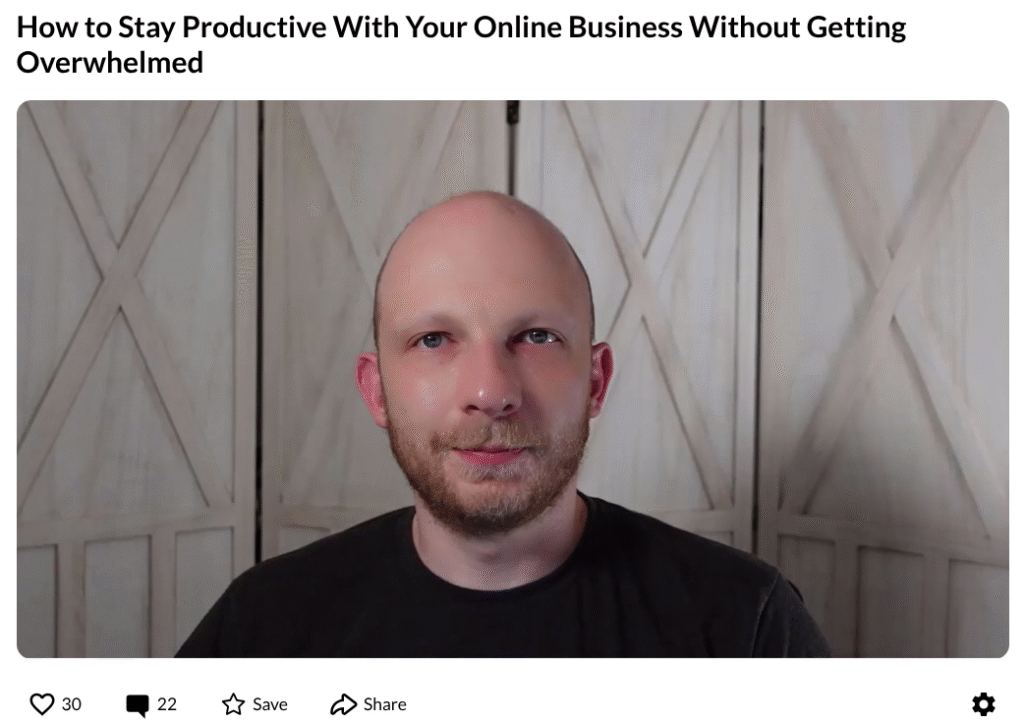Overwhelmed by Big Goals and Zero Progress? Here’s How Online Entrepreneurs Are Crushing It With a Simple Framework

Master the SMART Goals System and Turn Vision Into Action—Your Blueprint for Measurable, Meaningful Online Success
“If you’ve ever set goals that felt exciting at first—but fizzled out due to lack of clarity or follow-through—this guide flips the script. Discover how the SMART framework (Specific, Measurable, Achievable, Relevant, Time-bound) empowers entrepreneurs to structure dreams into doable steps. From defining objectives to tracking real results, you’ll learn how to stay focused, motivated, and strategically aligned—so every action moves your online business forward”.
Setting goals makes a huge difference, especially for anyone working online. Without real targets, I often end up spinning my wheels or losing focus on what actually matters. I use the SMART goal framework to bring clarity and direction to my projects. It’s a simple idea, but it can completely switch up how I go about building my online business or pursuing any project, big or small. Here’s my take on setting SMART goals and why they are the foundation for real online success.
What Are SMART Goals?
SMART is actually an acronym. Each letter stands for a trait that helps shape good goals. It means goals should be Specific, Measurable, Achievable, Relevant, and Timebound. When I apply these traits to what I want to achieve, instead of vague ideas like “grow my website,” I end up with much clearer targets like “grow my site’s monthly traffic to 5,000 visitors in six months by publishing two new articles per week.”
This clarity is really important in the online world, where distractions are everywhere and details can make or break results. Using SMART goals helps me stick to a path I can actually follow, and it gives me real markers to see if what I’m doing is working or if I need to switch up my strategy.
Breaking Down Each SMART Component
Each part of SMART works together, but I find it’s helpful to think about them one by one. Here’s how I use each principle in practice:
- Specific: I need a goal that’s crystal clear so I know exactly what I’m working toward. It takes away any confusion.
- Measurable: A goal should have some way to check progress. If I can count it or track it, I know when I’m moving forward, or when I’m not.
- Achievable: The goal should be possible, given my resources and skills. Stretching is fine, but picking something realistic keeps me from burning out.
- Relevant: The goal needs to line up with my bigger online ambitions or business objectives. If it doesn’t help me move in the right direction, I skip it.
- Timebound: Deadlines keep me honest. Tying my goal to a concrete timeline stops me from letting it drag on forever.
I also remind myself that making a goal too rigid can backfire. Flexibility is important—sometimes a minor switch up or an honest reassessment leads to more realistic planning, which keeps me progressing instead of stalling.
Why SMART Goals Work Online
Running an online business or building a side hustle means dealing with a lot of moving pieces: content creation, marketing, networking, and more. SMART goals really help keep everything lined up. When I started using this framework, I saw right away that breaking a big online project into smaller, actionable steps made me much less overwhelmed. Hitting smaller milestones feels motivating and pushes me to keep going.
A big benefit of writing SMART goals is that they make it easier to see what’s worth my time. Instead of chasing things that sound good but don’t fit my direction, I focus my effort where it pays off. For anyone using platforms like Wealthy Affiliate or Business Hub, making SMART goals can give a boost to productivity and speed up your results. The training and community advice focuses on creating goals you can actually reach by following specific steps and methods.
Another reason SMART goals are especially useful online? The virtual space moves fast and trends shift constantly. Having clear timelines and targets helps guide my energy as new opportunities pop up, and it lets me adjust goals when something is no longer relevant or the results prove better than expected.
Getting Started: Turning Big Dreams into Actionable Steps
If you’re starting an online project, like building a blog, launching a product, or growing an email list, the early excitement can quickly turn into confusion about what to tackle first. Here’s how I break it down:
- Write Down What You Want: Just get it out on paper or your favorite notes app. This could be “make $500 per month online,” “launch a website,” or “get 1,000 YouTube subscribers.”
- Make It SMART: Rework it to fit each part of the SMART framework. For example, turn “get more followers” into “increase my Instagram followers from 500 to 1,500 in three months by posting five times a week and engaging with my audience daily.”
- Map Your Milestones: I like to set up smaller checkpoints that lead to the main goal. If the big target takes six months, I’ll break it into monthly and weekly steps, so I always know what matters this week.
- Track As You Go: I check in on my goals weekly. Some people use spreadsheets, others use project management tools, but even a notebook works if that’s your style. The point is to actually look at how things are going and adapt as needed.
Common Challenges (And How I Deal With Them)
Goalsetting, even with a great plan, runs into obstacles. I’ve hit plenty, and here’s what I usually come up against, plus what I do:
- Getting Overwhelmed: Breaking things down into the smallest possible steps really helps. For example, if I want to write an ebook, I’ll set a goal to write just one outline or one chapter at a time.
- Losing Motivation: I remind myself why I started in the first place, or I’ll join discussions or training at Wealthy Affiliate. Hearing success stories and tips keeps me motivated.
- Not Seeing Fast Results: Some online goals just take longer. Reviewing progress every few weeks shows me how far I’ve really come. Sometimes I need to tweak my strategies or expectations to keep it realistic.
Dealing With Setbacks
It’s natural not to hit every timeline or number exactly. I use setbacks as feedback, not failure. Adjusting timelines or strategies is sometimes the smartest move. For example, if I realize I picked a goal that’s too big, I’ll rework it to fit better with the time and resources I actually have. This kind of flexibility keeps the process positive and productive. In fact, I’ve learned that adapting my approach, rather than being rigid, is often the difference between moving forward and getting stuck.
SMART Goals and Wealthy Affiliate: How Training Can Help
When I first joined Wealthy Affiliate, I was introduced to the importance of laying out clear goals from day one. The platform’s training guides encourage members to set actionable, realistic milestones so they know where to put their energy. One lesson I really found valuable was about breaking down big yearly goals into weekly tasks. This made everything feel more doable, especially when I saw more experienced members using this strategy to stay consistent.
Wealthy Affiliate’s Business Hub gives me space to organize all my tasks and goals in one spot. It helps with project management, so I don’t lose track of deadlines or priorities. Their community feedback and live Q&A sessions mean I’m never alone in figuring out how to stick with my SMART targets or adjust them if I’m running into blocks.
I also took advantage of the Business Hub’s built-in reminders and scheduling tools, which made it easy to see my whole plan at a glance. When I’m juggling multiple projects, these scheduling features are an even bigger lifesaver, especially during busy months or when unexpected opportunities arise. The support from community members offers encouragement and keeps things on track.
RealLife Examples: Applying SMART Goals Online
Here are a few ways I use SMART goals for different online pursuits:
- Affiliate Marketing: Instead of just saying I’ll “increase income,” I target “earn $100 per month through affiliate links by publishing three indepth product reviews and driving 300 visitors per week to my site for the next four months.”
- Content Creation: Instead of a loose wish to “blog regularly,” I’ll set “publish one SEOoptimized blog post every Tuesday for 12 weeks, aiming for 800 to 1,200 words and at least one internal link.”
- Social Media Growth: Rather than “be more active,” I’ll plan “post a tip or share a resource on Twitter every weekday for the next 60 days to build routine and double my engagement.”
This process saves me time and hassle. I know clearly if I’m on track, and I can spot what’s working, or what should be adjusted. For example, if one type of post is bringing in more clicks or comments, I can mix in some variety or focus more on that content, putting my effort where I see results.
Frequently Asked Questions About SMART Goals Online
What kinds of online goals fit best with the SMART framework?
Any goal works. Growing website traffic, building an email list, increasing affiliate sales, launching a digital product—all can be made SMART by sharpening details and giving them a timeline.
How do I keep myself accountable once I set my goals?
Writing goals down and sharing them in forums or with accountability groups at Wealthy Affiliate helps a lot. The Business Hub has reminders and progresstracking features that keep me on schedule. Some people even find weekly checkins with a peer give a big boost to consistency.
What should I do if I fall behind?
I focus on progress over perfection. When things slip, I review the steps, adjust the timeline, or break goals into even smaller actions. Getting support or advice from other members is motivating too. Still, it’s important not to beat yourself up; online growth is a series of small wins that build up over time.
Tools and Resources to Stay on Track
Beyond the SMART framework, I use tools to help turn my plans into action:
- Business Hub at Wealthy Affiliate: This helps organize my projects, deadlines, and reminders all in one place.
- Goalsetting Apps: Tools like Trello, Asana, or Google Calendar let me set deadlines, checklists, and keep up momentum. They make it easy to move tasks around if things change unexpectedly.
- Progress Journals: Just jotting down wins and lessons learned, even if it’s on paper, keeps me honest. I find a quick daily note helps me spot patterns and refine my approach.
The right tools play a big role, but the process always starts with a clear, SMART plan and the willingness to adapt as your online adventure unfolds.
Success online starts with knowing where you want to go and breaking it down into steps you can track and complete. Setting SMART goals gives me a playbook for what I need to do next, helps keep me motivated, and makes results easier to reach. If you’re ready to get serious about business or creative projects online, setting clear goals is the first step worth taking. For anyone who finds sticking to a plan challenging, platforms like Wealthy Affiliate offer the guidance and community support to keep moving in the right direction. Every big accomplishment I’ve seen online started with a goal that was specific, measurable, achievable, relevant, and timed for action.
